Queensland Australia Travel Guide A Vagabond Life
Traveling to Queensland, Australia, offers an unrivaled adventure into a world where nature’s diversity meets vibrant culture. This sun-kissed state is famed for its breathtaking Great Barrier Reef, an underwater kaleidoscope of coral and marine life that’s a must-see for snorkelers and divers. Queensland’s coastline boasts pristine beaches where surfers and sun-seekers find their paradise, particularly on the iconic Gold Coast.
Beyond its coastal allure, Queensland’s hinterland features ancient rainforests, such as the Daintree, where the green canopy teems with unique wildlife, offering serene walks and the chance to reconnect with nature. The state’s tropical climate makes it a year-round destination for outdoor activities, from hiking and kayaking to sailing and hot air ballooning.
Cities like Brisbane blend laid-back charm with a buzzing cultural scene, hosting lively markets, international cuisine, and vibrant nightlife. Queensland’s indigenous heritage, visible in art, music, and dance, adds a rich layer of cultural experiences. From the natural wonders of its landscapes to the warmth of its people, Queensland encapsulates the adventurous spirit of Australia.
Queensland Climate
Queensland, Australia, features a diverse climate across its vast expanse, ranging from tropical in the north to more temperate in the south. The state experiences distinct wet and dry seasons in its tropical regions, with the Wet season typically occurring from November to April and bringing heavy rainfall and high humidity. This period also coincides with the risk of tropical cyclones.
In the southern and inland areas, including cities like Brisbane and the Sunshine Coast, Queensland experiences a more temperate climate characterized by mild winters and warm to hot summers. These regions generally receive lower rainfall compared to the tropical north, with summer rainfall usually occurring in the form of afternoon thunderstorms.
Overall, Queensland enjoys a relatively warm climate year-round, making it an attractive destination for visitors seeking sunshine and outdoor activities. However, travelers should be prepared for the variability in weather patterns across different regions of the state.
.
Queensland Table of Contents
Queensland Map

Australia
When To Visit Queensland
The best time to travel to Queensland, Australia, depends on your interests and the experiences you’re seeking, as the state’s vast size and climatic diversity mean different regions are best visited at various times of the year.
For Beach and Reef Visits: If you’re drawn to Queensland’s iconic beaches or planning to explore the Great Barrier Reef, the best time is from June to October. This period offers dry weather, clearer water for diving and snorkeling, and more comfortable temperatures for enjoying the coastal areas. It’s also outside the stinger season (November to May), when jellyfish are more prevalent in the waters off Northern Queensland.
For Tropical North Queensland: Visiting areas like Cairns, the Daintree Rainforest, and the tropical islands off Queensland’s coast is ideal in the winter months (June to August). The weather is cooler, less humid, and there’s lower rainfall, making outdoor activities and exploring the rainforest more enjoyable.
For Outback Adventures: The winter months are also the best time to explore Queensland’s outback. The cooler temperatures make hiking, camping, and exploring the vast landscapes far more comfortable than during the hot summer months.
For City Experiences: Cities like Brisbane are great to visit year-round, but spring (September to November) and autumn (March to May) offer pleasant temperatures and are ideal for enjoying outdoor activities, festivals, and the vibrant café culture.
Keep in mind that school holidays, particularly in December and January, can see local tourist spots become crowded as many Australians take their vacations. Booking accommodations and activities in advance is advisable during these peak periods.
Ultimately, Queensland’s diverse offerings mean there’s always something to enjoy, regardless of when you visit. Consider your preferred activities and check the regional climates to decide the best time for your trip.
Queensland Climate
Queensland, Australia, features a diverse climate across its vast expanse, ranging from tropical in the north to more temperate in the south. The state experiences distinct wet and dry seasons in its tropical regions, with the Wet season typically occurring from November to April and bringing heavy rainfall and high humidity. This period also coincides with the risk of tropical cyclones.
In the southern and inland areas, including cities like Brisbane and the Sunshine Coast, Queensland experiences a more temperate climate characterized by mild winters and warm to hot summers. These regions generally receive lower rainfall compared to the tropical north, with summer rainfall usually occurring in the form of afternoon thunderstorms.
Overall, Queensland enjoys a relatively warm climate year-round, making it an attractive destination for visitors seeking sunshine and outdoor activities. However, travelers should be prepared for the variability in weather patterns across different regions of the state.
Things To See & Do In Queensland Australia
Brisbane
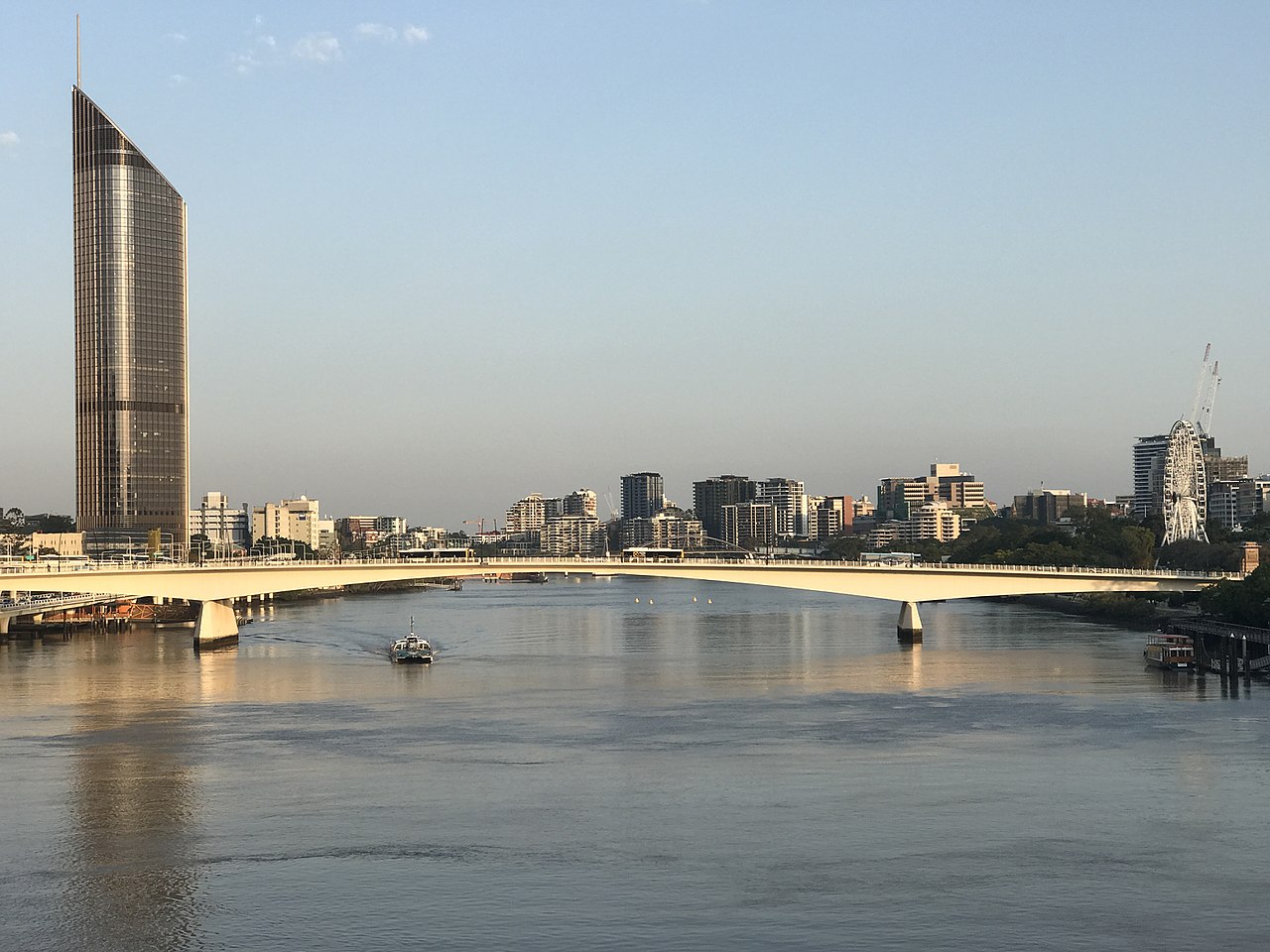
Brisbane
Traveling to Brisbane, Australia, promises an eclectic mix of urban sophistication and laid-back charm, set against the backdrop of Queensland’s subtropical climate. Brisbane enjoys a subtropical climate with hot, humid summers (December to February) and mild, dry winters (June to August). Spring (September to November) and autumn (March to May) offer delightful weather for outdoor exploration, with temperatures ranging from warm to pleasantly cool.
Top 5 things to see in Brisbane:
South Bank Parklands: A bustling riverside precinct offering lush gardens, recreational spaces, dining options, and cultural attractions like the Queensland Art Gallery.
Story Bridge: Iconic landmark offering panoramic views of the city and opportunities for adventurous climbs.
Lone Pine Koala Sanctuary: The world’s oldest and largest koala sanctuary, providing the chance to cuddle a koala and interact with native Australian wildlife.
Mount Coot-tha: A scenic lookout offering panoramic views of Brisbane and its surroundings, with walking trails and the Brisbane Botanic Gardens.
City Botanic Gardens: Tranquil green space in the heart of the city, featuring a diverse range of subtropical plant species, walking paths, and picnic spots.
Great Barrier Reef
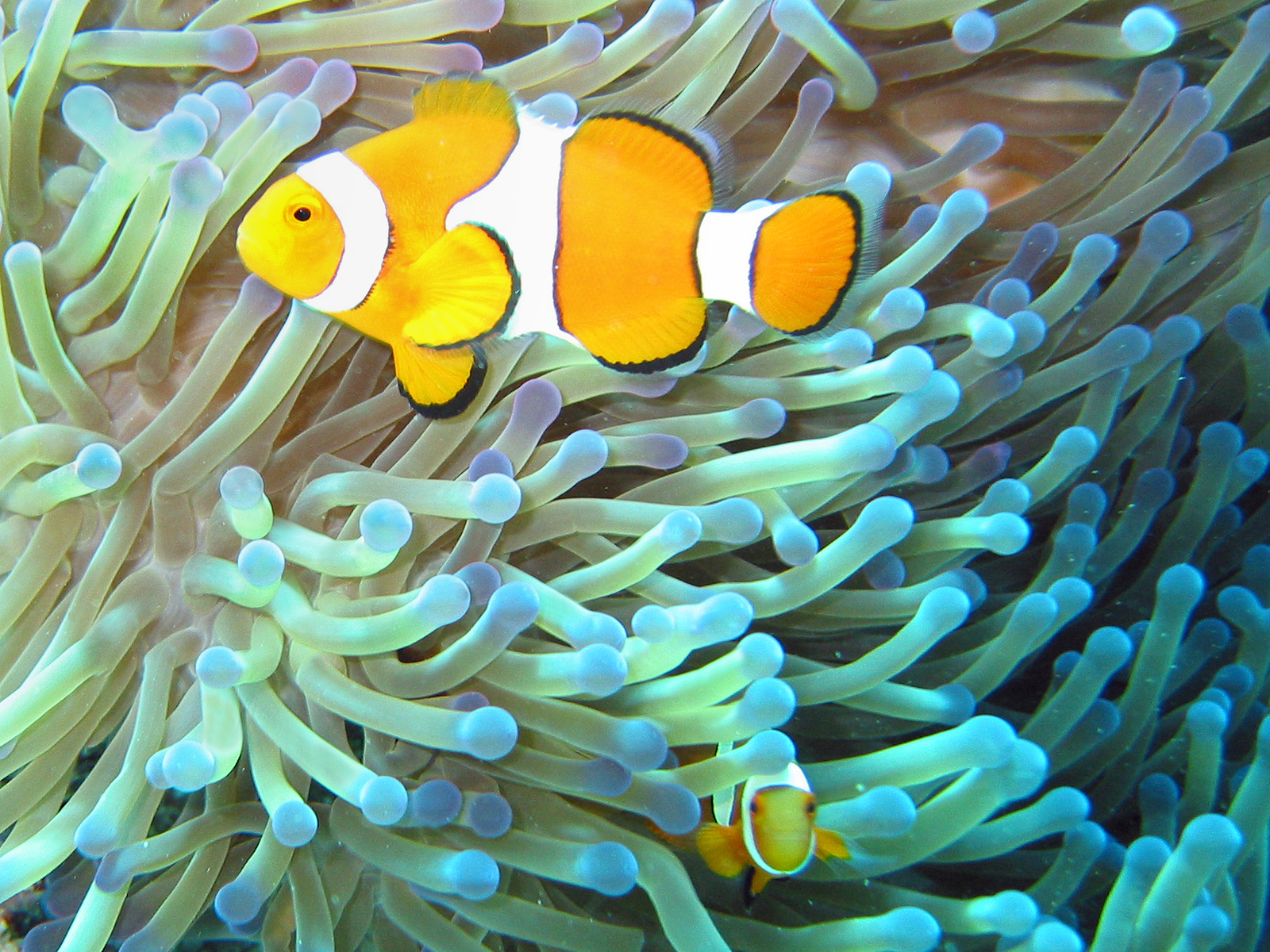
The Great Barrier Reef
Traveling to the Great Barrier Reef, one of the world’s most stunning natural wonders, is an unforgettable experience that showcases the vibrant life beneath the waves. Stretching over 2,300 kilometers along the Queensland coast, it’s the largest coral reef system on the planet, home to thousands of marine species.
The best time to visit the Great Barrier Reef is from June to October. This period avoids the summer rain, which can reduce water clarity, and escapes the stinger season, enhancing the overall snorkeling and diving experience with clearer waters and more pleasant weather.
To get to the Great Barrier Reef, most visitors start from Cairns or Port Douglas, which offer a range of tour options, from day trips to live-aboard experiences. These gateway cities are accessible by air, with international and domestic flights arriving in Cairns Airport. From there, numerous boats and small aircraft transport visitors to various reef locations, ranging from inner reef areas suitable for beginners to outer reef sites for more experienced divers and snorkelers. Embracing conservation efforts while exploring the reef’s breathtaking underwater landscapes promises a deeply enriching encounter with nature.
Noosa Heads
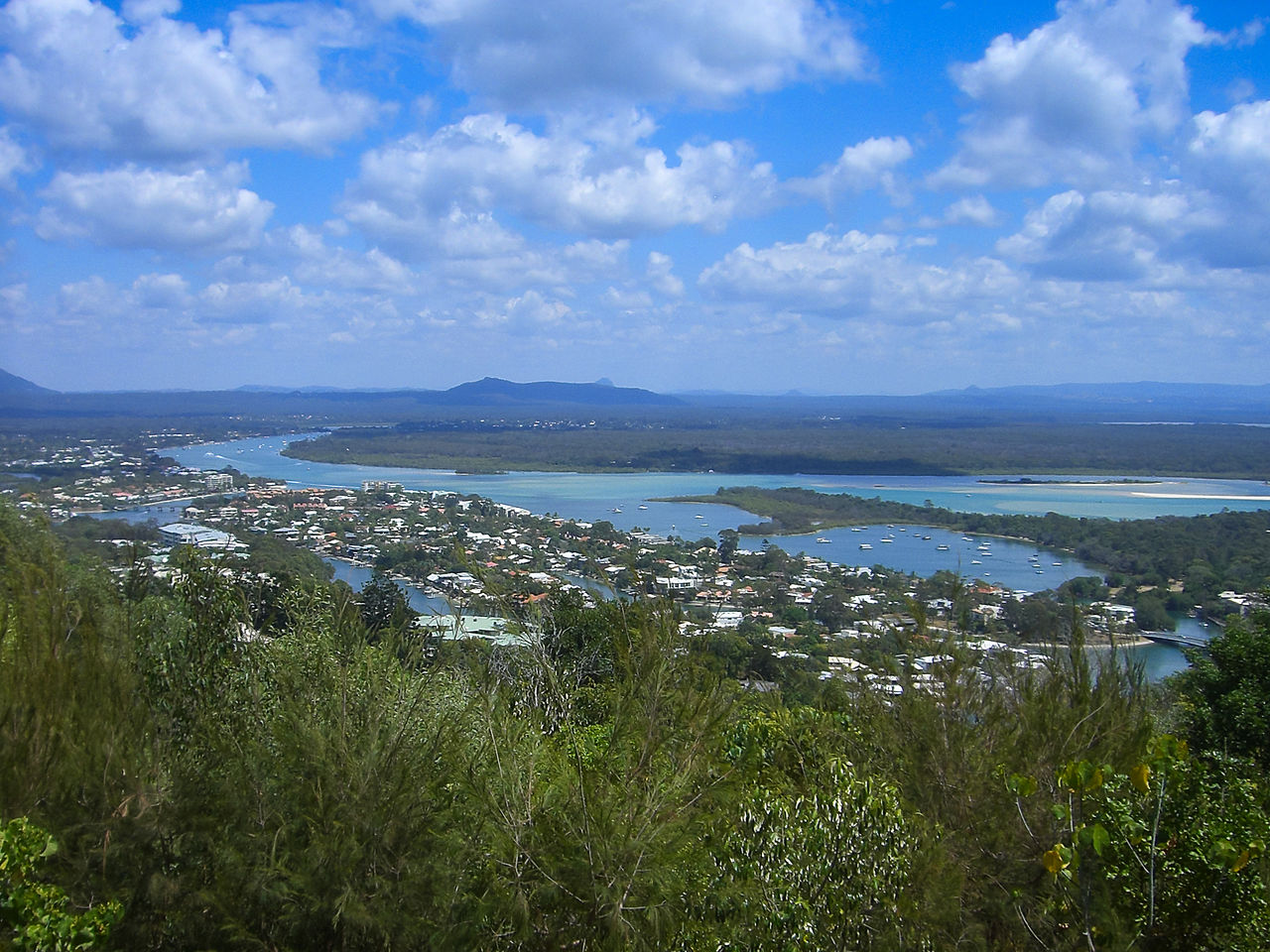
Noosa Heads
Travelling to Noosa Heads, Queensland, Australia, promises a serene escape with its pristine beaches, lush hinterland, and vibrant culinary scene. The best time to visit Noosa Heads is during the shoulder seasons of autumn (March to May) and spring (September to November) when the weather is pleasantly warm, and the crowds are thinner, allowing for a more relaxed experience.
Top 5 things to do in Noosa Heads:
Explore Noosa National Park: Embark on scenic coastal walks offering breathtaking views of the ocean, secluded beaches, and the chance to spot native wildlife like koalas and dolphins.
Relax at Main Beach: Noosa’s main beach is a haven for sunbathers, surfers, and swimmers, with its gentle waves and golden sands providing the perfect backdrop for a day of relaxation.
Shop and dine on Hastings Street: Indulge in retail therapy at boutique shops, galleries, and alfresco cafes lining this iconic street, renowned for its upscale atmosphere.
Visit the Noosa River: Hire a stand-up paddleboard or kayak to explore the tranquil waters of the Noosa River, lined with mangroves and waterfront eateries.
Experience the Noosa Everglades: Take a guided kayak tour or boat cruise through the stunning waterways of the Noosa Everglades, known for their pristine beauty and abundant wildlife.
Whether you’re seeking outdoor adventure, culinary delights, or simply relaxation by the sea, Noosa Heads offers a perfect blend of natural beauty and leisure activities for every traveller.
Atherton Tablelands
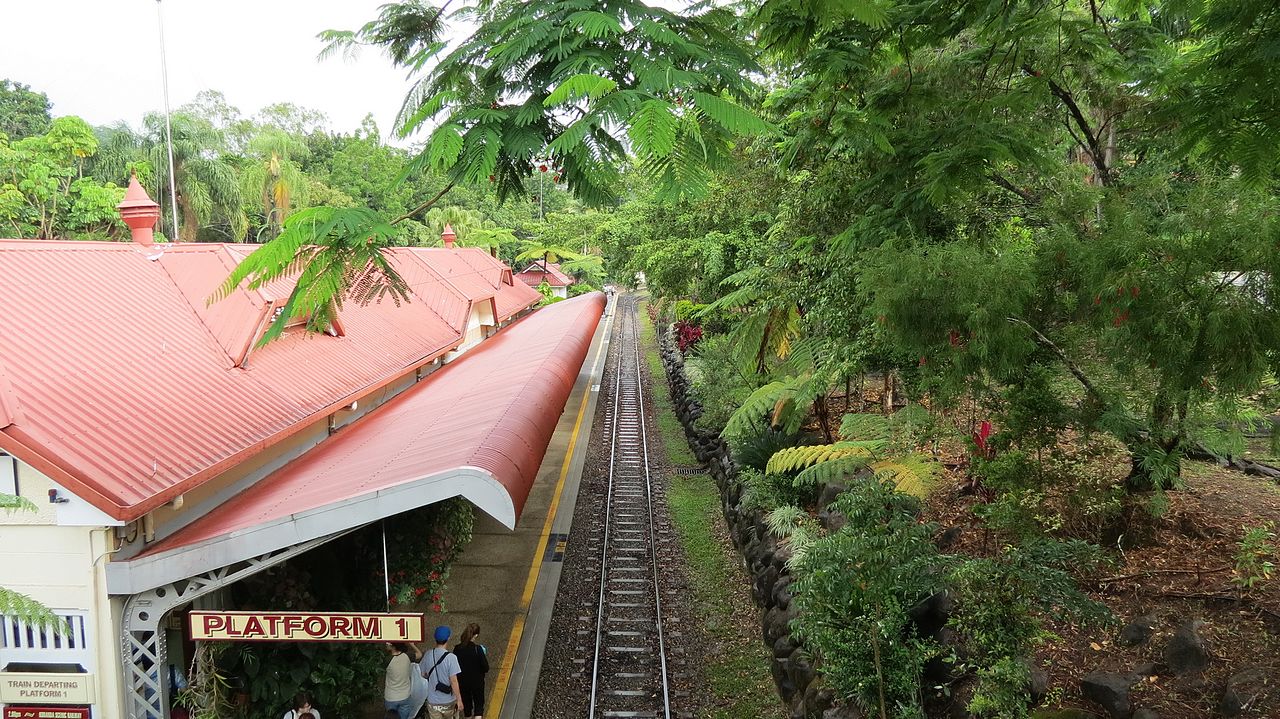
The Atherton Tablelands
Traveling to the Atherton Tablelands in Queensland, Australia, immerses you in a landscape of rolling green hills, dense rainforests, and cascading waterfalls. This picturesque region, a comfortable drive from Cairns, is appreciated for its cooler climate relative to the tropical coast, making it an appealing destination throughout the year. The optimal time for a visit is during the dry season from May to October, offering pleasant weather and ideal conditions for outdoor adventures such as hiking, wildlife exploration, and visiting natural attractions.
Getting to the Atherton Tablelands is straightforward from Cairns, which is well-connected by air to major Australian cities. From Cairns, one intriguing travel option is the scenic train journey to Kuranda, a charming village on the Tablelands’ fringe. From Kuranda, visitors can rent a car or catch a bus to delve deeper into the Tablelands. This route combines the ease of travel with the opportunity to witness the breathtaking landscapes from a unique perspective. Once in the heart of the Tablelands, a mosaic of historic towns, coffee plantations, and natural wonders awaits, offering a serene escape into one of Queensland’s most captivating regions
Gold Coast
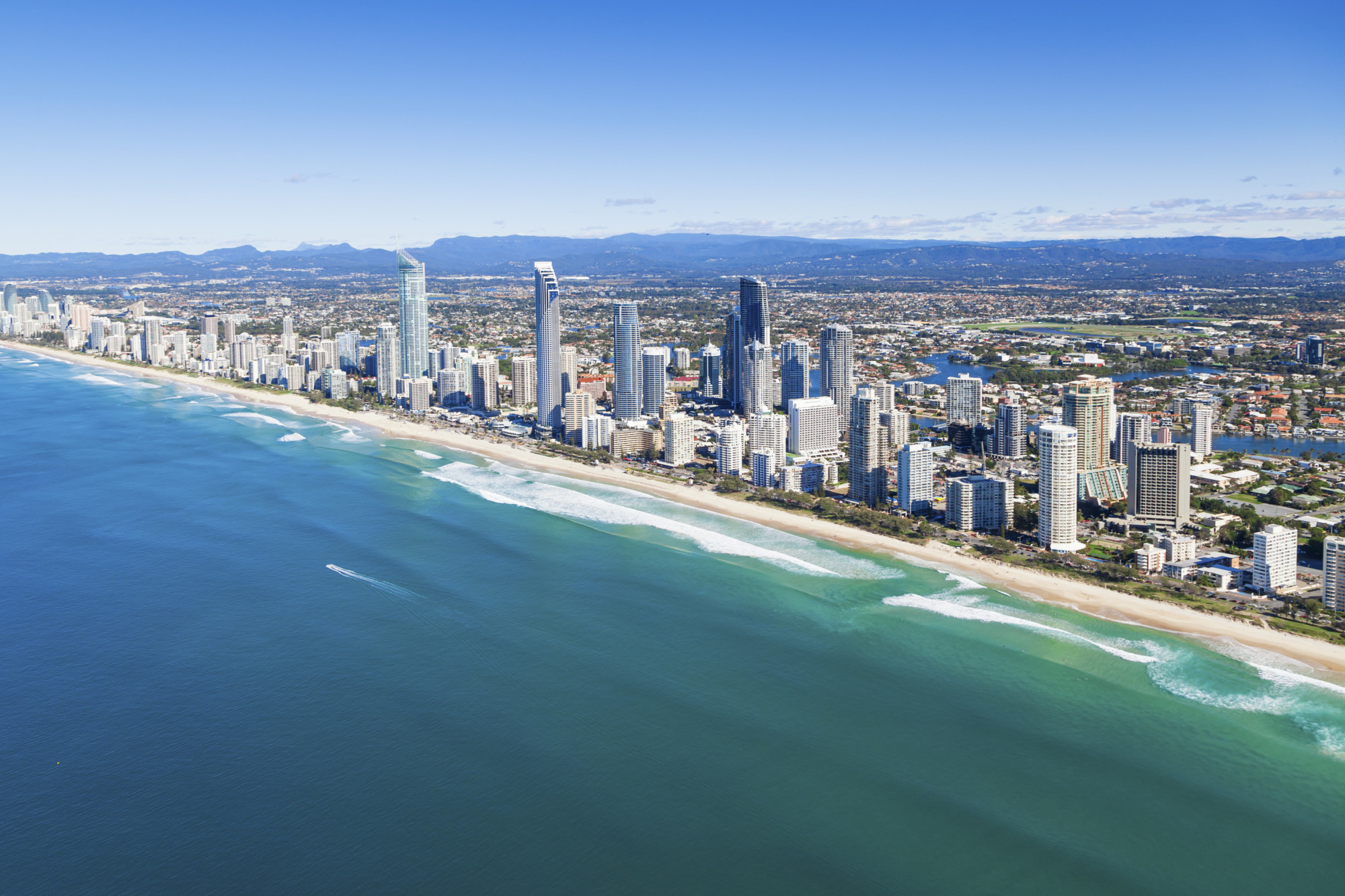
Gold Coast
Traveling to the Gold Coast, Australia, invites visitors into a world of sun-soaked beaches, thrilling attractions, and vibrant entertainment. The best time to visit the Gold Coast is during the autumn months (March to May) and spring (September to November), when the weather is pleasantly warm, and the crowds are thinner, allowing for a more enjoyable experience.
Top 5 things to see on the Gold Coast:
Surfers Paradise Beach: Iconic for its golden sands and rolling waves, Surfers Paradise Beach is perfect for surfing, swimming, or simply soaking up the sun.
Theme Parks: Experience adrenaline-pumping rides and family-friendly entertainment at world-class theme parks like Dreamworld, Warner Bros. Movie World, and Sea World.
Currumbin Wildlife Sanctuary: Get up close and personal with native Australian wildlife, including koalas, kangaroos, and crocodiles, in a beautiful rainforest setting.
SkyPoint Observation Deck: Take in panoramic views of the Gold Coast skyline and beyond from the SkyPoint Observation Deck, located atop the Q1 building.
Burleigh Heads National Park: Discover stunning coastal landscapes, walking trails, and scenic lookouts in this picturesque national park, ideal for nature lovers and hikers alike.
Whether you’re seeking adrenaline-fueled adventures, family-friendly fun, or tranquil beach escapes, the Gold Coast offers a diverse range of experiences for every traveler.
Longreach

Longreach Queensland
Longreach, a historic town in Outback Queensland, Australia, offers visitors a journey into the heart of the country’s pioneering spirit and outback heritage. Located in remote Queensland, Longreach is best visited during the cooler months from April to October when temperatures are more comfortable for exploring the rugged landscapes and engaging in outdoor activities.
Longreach holds immense significance in Australian history as a pivotal town in the development of outback Australia. It was once a bustling center for cattle droving and served as a vital hub for the Royal Flying Doctor Service and the Australian Stockman’s Hall of Fame, commemorating the rugged pioneers who shaped the region.
Top experiences in Longreach include visiting the Qantas Founders Museum, where visitors can learn about the history of aviation in Australia, and taking a cruise on the Thomson River to witness breathtaking outback sunsets and gain insight into the life of early settlers. With its rich history and authentic outback experiences, Longreach, situated in the heart of Outback Queensland, offers travelers a unique glimpse into Australia’s pioneering past.